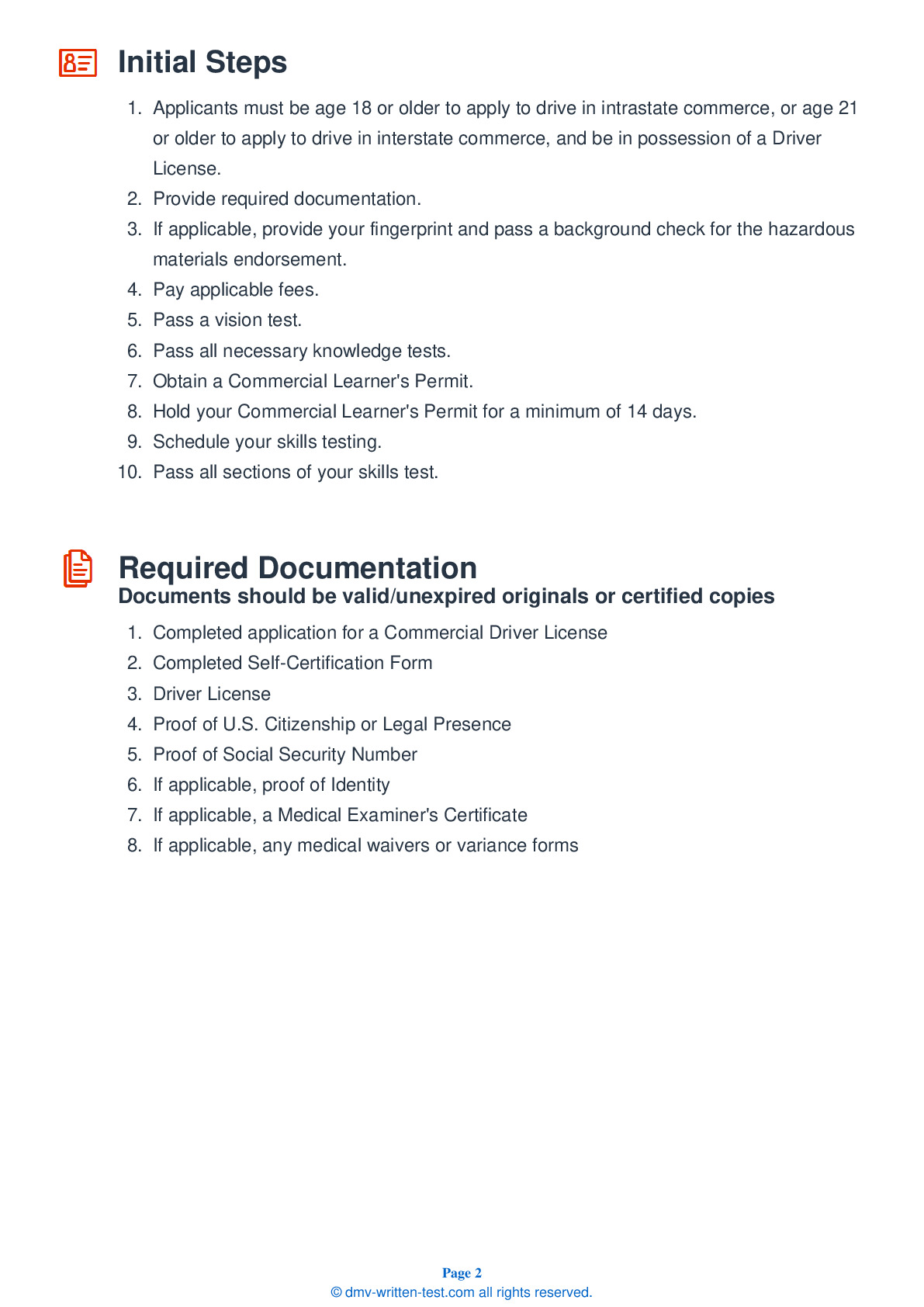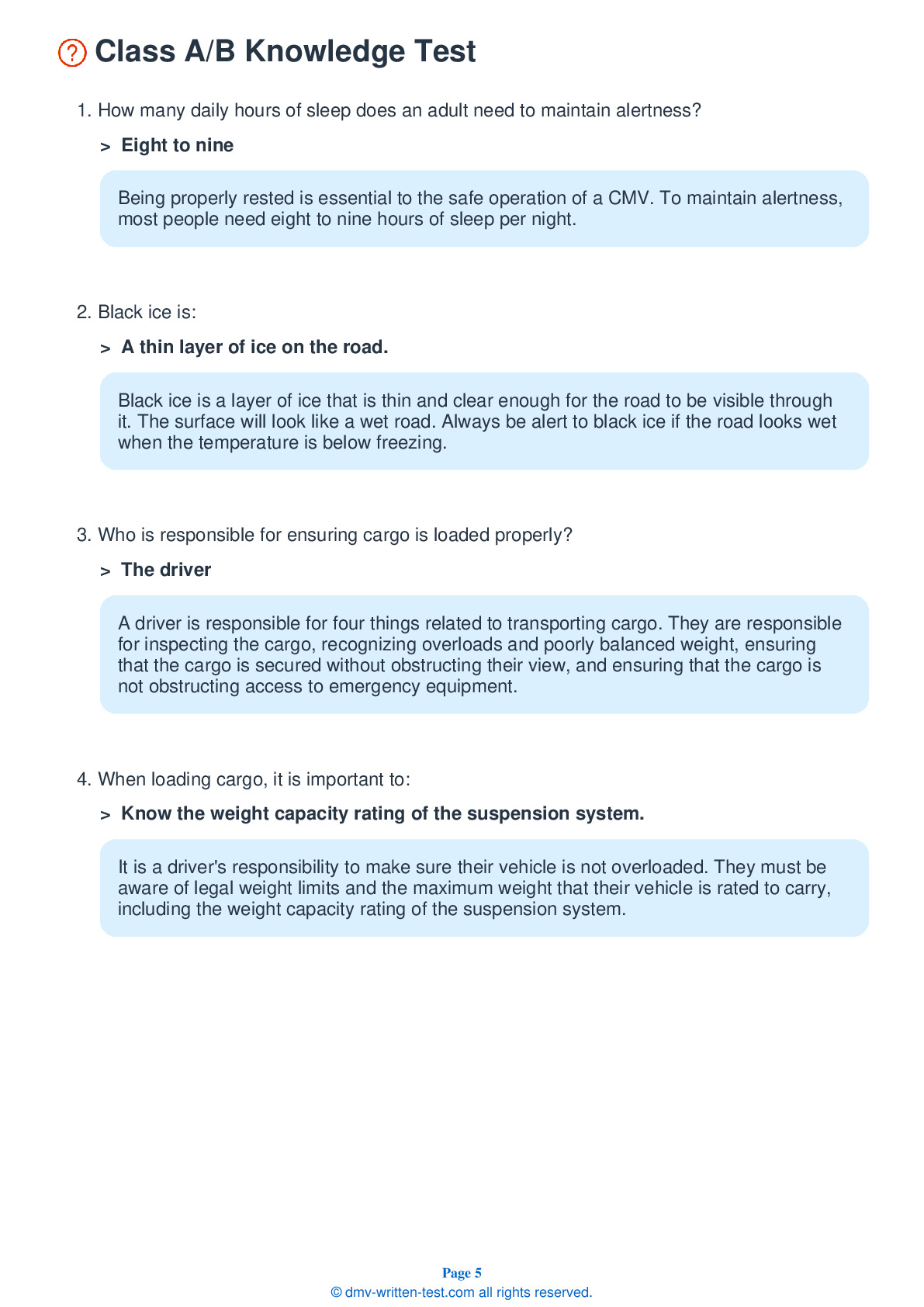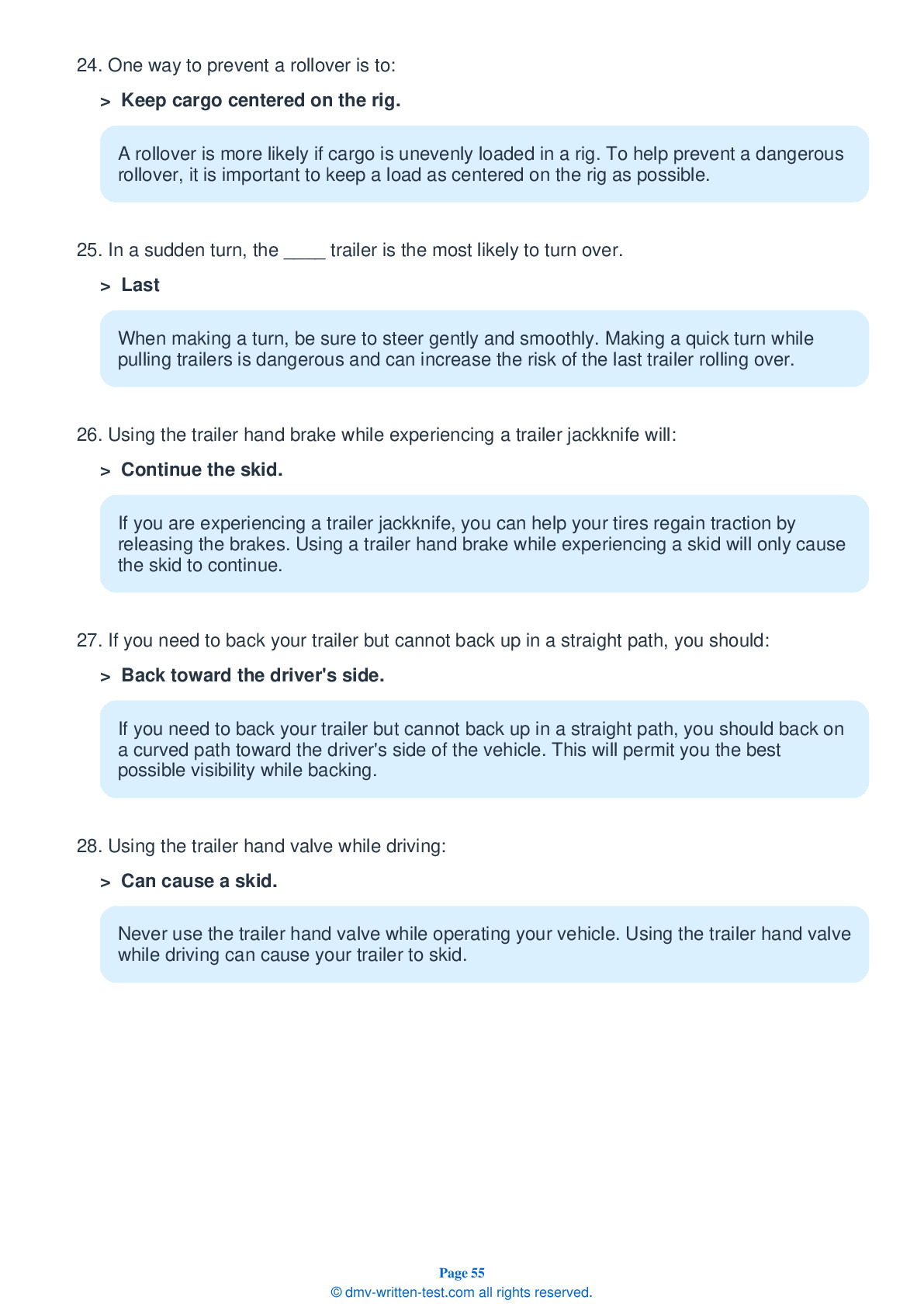Air Brakes
This endorsement is required for driving a vehicle with air brakes. To receive this endorsement, applicants must pass a written test. The test consists of 25 multiple choice questions. Each question has three answer choices. To pass, the applicant must answer at least 20 questions correctly. Test questions come from the Alaska Commercial Driver License Manual. Questions come from the chapter covering: Air Brakes. The Air Brakes endorsement may be used with the Class A, B or C CDL.
Number of Question
Passing Score
19. When the spring brakes are on, you should never:
Explanation
Never push down the brake pedal while the spring brakes are activated. The combined force of springs and air pressure could damage the brakes.
20. Air storage tanks:
Explanation
In an air brake system, the air storage tanks hold compressed air to be used by the brakes. The number and size of air tanks varies among vehicles.
21. If you are braking on dry pavement while traveling at 55 mph, how much distance will brake lag add to your overall stopping distance?
Explanation
The total stopping distance for vehicles equipped with air brakes is made up of four factors: perception distance, reaction distance, brake lag distance, and braking distance. When braking at a speed of 55 mph while driving on dry pavement, the brake lag can add around 32 feet to the vehicle's total stopping distance.
22. What kind of force do emergency brakes use?
Explanation
Air brakes are really three different braking systems: the service brake, the parking brake, and the emergency brake. Emergency and parking brakes are applied with mechanical force.
23. A driver can rely on front wheel braking to work:
Explanation
Front wheel braking is effective under all road conditions. It is unlikely that you will experience a front wheel skid, even on ice.
24. What color light indicates a vehicle's ABS is not working?
Explanation
On vehicles with Anti-Lock Braking Systems (ABS), yellow malfunction lamps alert the driver to ABS malfunction.
25. When operating a vehicle with a dual air brake system, the driver should:
Explanation




